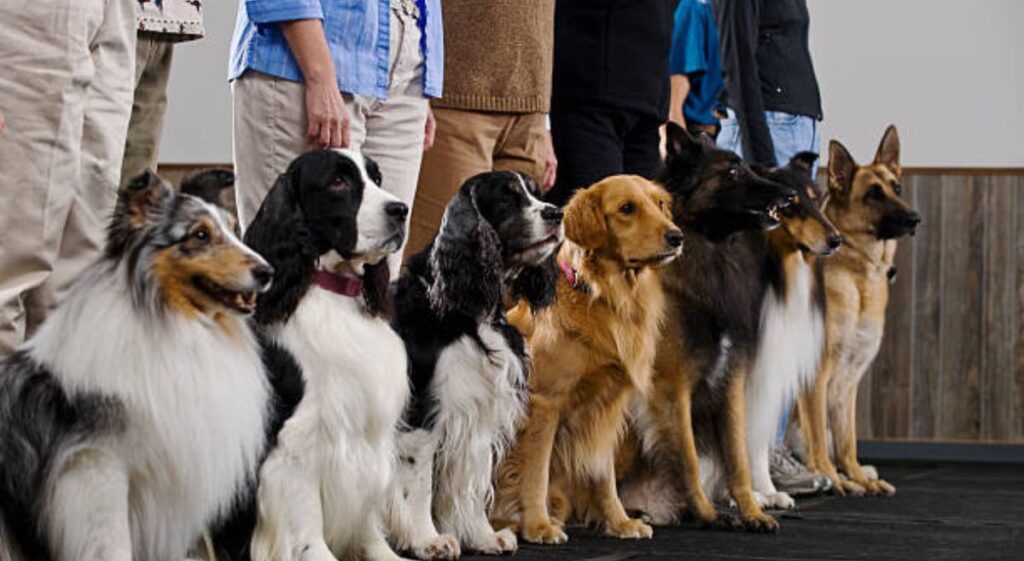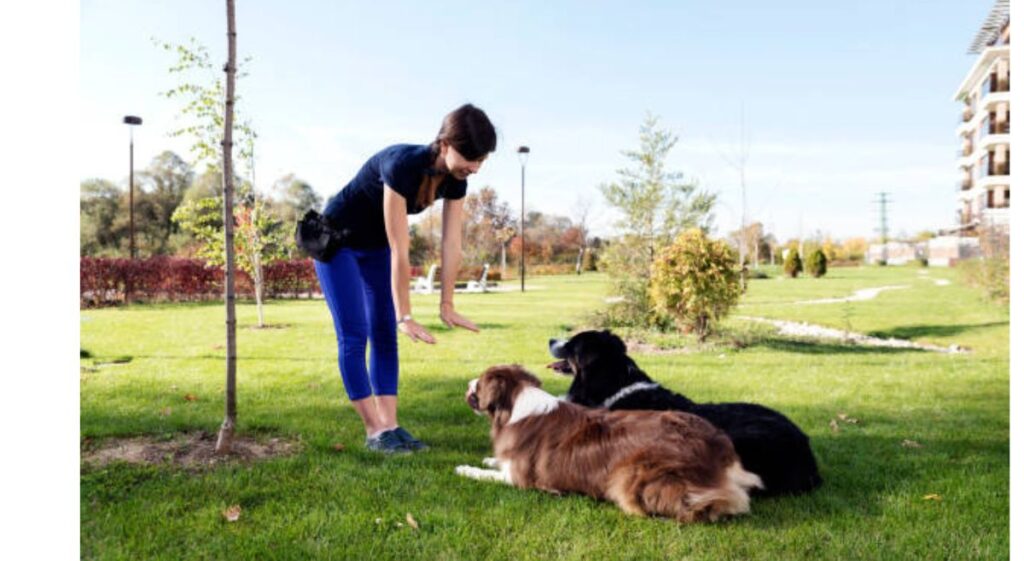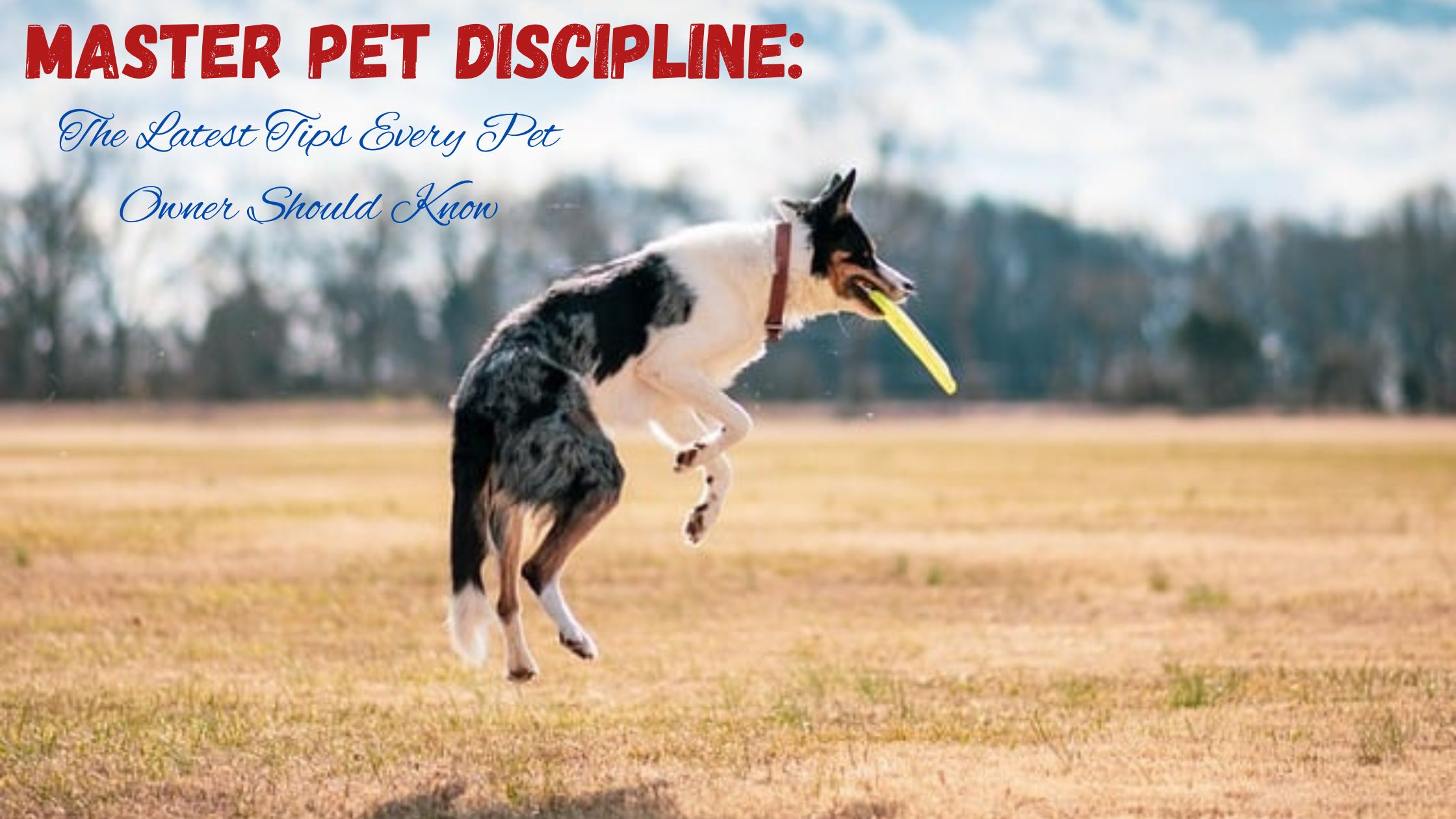Introduction:-
Master Pet Discipline: The Latest Tips Every Pet Owner Should Know

As a pet owner, your goal is to establish a loving and harmonious relationship with your furry companion. To achieve this equilibrium, effective discipline is essential. Mastering the art of pet discipline can lead to improved behavior, a strengthened bond, and a happier household. In this article, we’ll uncover the latest insights and techniques every pet owner should know to excel in pet discipline..
What are the best positive reinforcement techniques for pets?
Positive Reinforcement Techniques for Pet Discipline:

Training pets with positive reinforcement enhances desired behaviors and strengthens the bond between you and your pet. Here are some effective techniques:
- Treats: Offer a small, favorite treat immediately after your pet performs the desired behavior. This reinforces the behavior and encourages repetition.
- Verbal Praise: Use encouraging words like “Good job!” in a cheerful tone. Pets, especially dogs, appreciate positive vocal reinforcement.
- Clicker Training: Use a clicker to mark the exact moment your pet does something right, immediately followed by a reward. This helps the pet understand the connection between the behavior and the reward.
- Toys and Playtime: Engage in interactive play or offer a favorite toy as a reward for pets motivated by play. This is effective for dogs and cats who enjoy playing.
- Physical Affection: Reward your pet with petting, scratching, or cuddling if they respond well to physical touch. This reinforces the behavior and strengthens the bond.
- Short Training Sessions: Keep training sessions focused and short to maintain interest and prevent frustration. Ending on a positive note keeps the pet enthusiastic for the next session.
- Jackpot Rewards: Occasionally give a more significant or valuable reward for exceptional behavior. This unexpected bonus encourages repetition.
- Consistency and Timing: Immediate reinforcement helps the pet connect the reward with the behavior. Consistently rewarding the same behavior accelerates learning.
- Shaping: Reward successive approximations of the desired behavior. For example, if training a dog to fetch, start by rewarding it for looking at the ball, then touching it, and finally bringing it back.
- Calm and Patient Approach: Maintain a composed demeanor and be patient with your pet’s progress. Positive reinforcement should always be a pleasant experience for the pet.
By applying these techniques consistently, you can effectively train your pet, foster a strong bond, and create a positive training environment.
What are some common mistakes in pet discipline?
To discipline your pet effectively, you need to have a deep understanding of their behavior and a significant amount of patience. However, there are several common mistakes that can sabotage your training efforts and harm the bond between you and your pet. Here are some pitfalls to avoid:

- Inconsistent Rules: Pets get confused when you sometimes allow certain behaviors but scold them for doing the same thing at other times. Consistency is crucial for successful training. For example, if you let your dog jump on the couch occasionally but scold it at other times, it won’t understand what you expect.
- Punishment Over Reinforcement: Relying on punishment, like yelling or physical reprimands, can make your pet fearful, anxious, and aggressive. Positive reinforcement is far more effective in encouraging desired behaviors without damaging your relationship.
- Poor Timing: If you don’t respond to your pet’s behavior right away, they won’t be able to connect the action with the consequence. For instance, scolding a dog hours after it chewed something won’t help it learn what it did wrong.
- Overuse of “No”: Constantly saying “No” without showing your pet what they should do instead can be confusing. It’s better to redirect unwanted behaviors towards something acceptable. For example, if your pet starts chewing on your shoes, offer them a chew toy instead.
- Lack of Patience: Every pet learns at their own pace, and expecting immediate results can lead to frustration. Losing patience or getting angry during training can create a negative experience for your pet.
- Neglecting Socialization: Proper socialization is vital for a well-behaved pet. If you don’t expose your pet to various environments, people, and other animals, they may develop fear-based behaviors and become difficult to control.
- Inconsistent Reinforcement: Rewarding good behavior sometimes and not others can confuse your pet about what is expected. For example, if you reward your dog for sitting sometimes but not others, it will slow down its learning process.
- Unrealistic Expectations: Setting goals that are too ambitious for your pet can lead to frustration for both of you. Training should be gradual, with small, achievable goals. Overwhelming your pet with too much at once can be counterproductive.
- Ignoring Body Language: Pets communicate a lot through body language. If you ignore signs of stress or discomfort, your pet’s negative behaviors may escalate. It’s important to recognize and respond to these signals appropriately.
- Using Physical Force: Hitting, kicking, or using harsh physical corrections can cause long-term behavioral problems and damage the trust between you and your pet. Positive discipline methods should always be non-violent.
- Reinforcing Negative Behaviors: Sometimes, pet owners unknowingly reinforce unwanted behaviors. For example, comforting a barking dog may lead it to believe that barking gets it attention, encouraging the behavior.
- Lack of Mental and Physical Stimulation: A bored pet is more likely to engage in destructive behaviors. Ensuring your pet has enough exercise, play, and mental challenges can prevent many discipline issues from arising in the first place.
Avoiding these common mistakes can lead to more effective training and a stronger, happier relationship with your pet.
How can I discipline my pet without damaging our bond?
How to Discipline Your Pet Without Damaging Your Relationship
- Focus on Positive Reinforcement
- Reward good behavior with treats, praise, or playtime.
- Use a clicker to mark the exact moment your pet does something you want them to do.
- Redirect Unwanted Behaviors
- Offer alternatives to unwanted behaviors.
- Stay calm and composed when redirecting your pet.
- Set Clear and Consistent Boundaries
- Ensure everyone in the household follows the same rules and boundaries.
- Use simple, clear commands for desired behaviors.
- Use Time-Outs
- Place your pet in a different room for a few minutes if they exhibit unwanted behavior.
- This is not about isolation, but rather giving them a moment to calm down.
- Teach by Example
- Model the behavior you want your pet to do.
- Use positive language and energy to encourage your pet.
- Avoid Physical Punishment
- Use positive reinforcement and gentle guidance instead.
- Use a firm but calm voice if you need to correct your pet.
- Provide Mental and Physical Stimulation
- Ensure your pet gets enough exercise and mental challenges.
- Be Patient and Understanding
- Understand your pet’s needs and avoid showing frustration.
- Training takes time and patience.
- Create a Safe Environment
- Remove temptations and hazards from your home.
- Establish a daily routine for your pet.
- Seek Professional Help When Needed
- Consider working with a professional trainer or veterinary behaviorist for specific or complex issues.
By following these tips, you can effectively discipline your pet while maintaining a strong and loving bond.
Conclusion
Taming your pet’s behavior is a continuous journey that demands patience, consistency, and empathy. Applying these up-to-date tips can help forge a closer bond with your pet and promote good behavior. It’s important to remember that discipline is not about punishment but rather teaching your pet to thrive harmoniously within your household.
For more expert insights and guidance on pet care, subscribe to our newsletter and stay abreast of the latest trends in pet ownership.
References
- AVSAB: Evidence-based guidelines on animal behavior, emphasizing positive reinforcement and avoiding punishment.
- ASPCA: Comprehensive advice on pet training and discipline, focusing on humane methods.
- Humane Society of the US: Tips on training pets using positive reinforcement and understanding pet behavior.
- RSPCA: Physical punishment is harmful; reward-based training is beneficial.
- PetMD: Online resource with articles on common pet behavior problems and modern training techniques.
